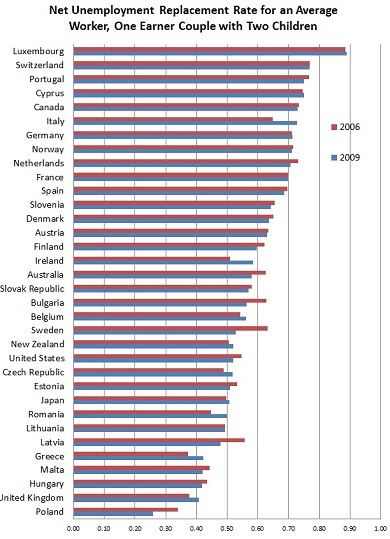What countries offer the most generous replacement of lost income in the event of job loss? And how have governments changed unemployment benefit since the onset of the economic crisis?
Thanks to a new dataset assembled by Olaf van Vliet & Koen Caminada (version 1, January 2012), we now have data on unemployment benefit schemes in 34 welfare states from the 1970s until 2009. Below I chart the net replacement rate for an average worker in a one earner household with two children for 2006 and the latest year available in the dataset (2009).
First, as it is well documented in welfare state literature, notice the difference compared to the gross replacement rates. In general, gross replacement rates tend to under-estimate the extent to which liberal welfare states such as the US compensate for income loss.
Second, one can identify three paths. Southern European countries such as Italy and Greece and European liberal market economies such as the UK and Ireland exhibit increases in their replacement rates. But another group of countries have mildly reduced their replacement rates: this includes eastern European countries such as Slovenia, Estonia, Latvia, Poland and Hungary but also non-EU liberal market economies such as the US and Australia. And the Scandinavian countries (Denmark, Finland and especially Sweden) have also reduced their unemployment benefit entitlements.







Be the first to comment on "Germany’s unemployment benefits among top five in eurozone"